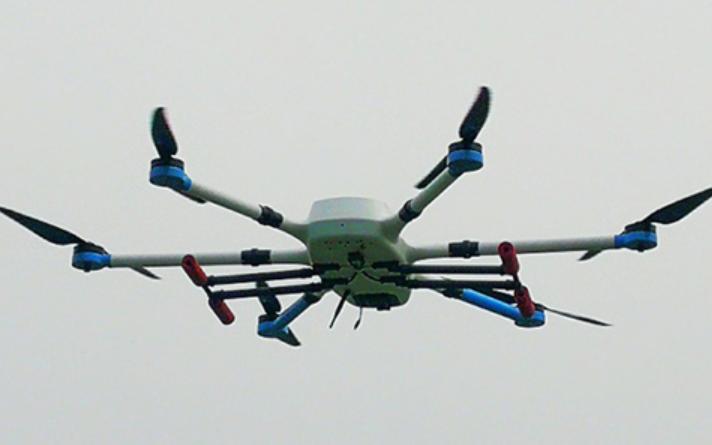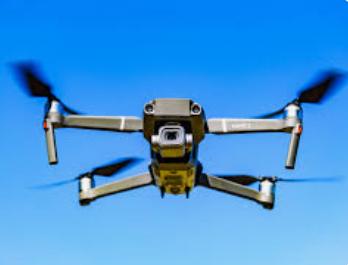
Drones have emerged as a groundbreaking technology in the field of scientific research. These unmanned aerial vehicles (UAVs) offer unmatched versatility and efficiency, enabling researchers to gather accurate data from remote and inaccessible locations. If you're wondering what are drones used for, their applications span a wide range—from environmental monitoring to wildlife conservation. Drones are transforming the way scientific studies are conducted. This blog delves into the various applications of drones in scientific research, highlighting their impact on data collection, environmental assessment, and wildlife studies.

How Do Drones Enhance Environmental Monitoring?
Drones significantly enhance environmental monitoring by providing detailed and timely data that were previously challenging to obtain. These UAVs can capture high-resolution images and videos, enabling precise observation of large and difficult-to-access areas. Utilizing drones for environmental monitoring reduces the need for human presence in hazardous locations, ensuring the safety of researchers.
Data Collection Techniques Using Drones
Drones employ various techniques to collect environmental data efficiently. Equipped with advanced sensors, cameras, and LIDAR systems, drones can capture aerial images, create detailed maps, and generate 3D models of landscapes. These UAVs can monitor vegetation health by analyzing spectral data from multispectral and hyperspectral cameras. Additionally, drones can deploy atmospheric sensors to measure air quality and pollution levels.
Analyzing Environmental Data Collected by Drones
The data collected by drones undergo thorough analysis to derive meaningful insights. Advanced software tools and algorithms process aerial images to create accurate geographic information system (GIS) maps. These maps help in assessing changes in land use, tracking deforestation, and monitoring soil erosion. Researchers utilize this data to predict environmental trends, plan conservation efforts, and develop strategies for sustainable resource management.
What Role Do Drones Play in Wildlife Research?
Drones play a critical role in wildlife research by enabling non-intrusive monitoring of animal populations and their habitats. UAVs offer a unique vantage point, allowing researchers to gather data without disturbing wildlife, thus ensuring the integrity of their natural behavior.
Tracking and Monitoring Wildlife Populations
Equipped with thermal imaging and high-resolution cameras, drones can track and monitor wildlife populations effectively. They capture detailed images and videos of animals, facilitating the study of their movements, behavior, and population dynamics. Drones can cover large areas swiftly, making them ideal for monitoring migratory species and conducting population censuses.
Assessing Habitat Health and Changes
Drones aid in assessing the health and changes in wildlife habitats by providing comprehensive aerial perspectives. They enable the mapping of vegetation covers, detection of illegal activities, and assessment of habitat degradation. This information is crucial for conservation planning, as it helps identify critical habitats that require protection and restoration.
How Are Drones Utilized in Atmospheric and Climate Studies?
In atmospheric and climate studies, drones offer a new dimension to data collection and analysis. They can gather data from various altitudes and locations, aiding in a deeper understanding of atmospheric processes and climate change.
Collecting Atmospheric Data with Drones
Drones equipped with atmospheric sensors can measure temperature, humidity, wind speed, and other meteorological parameters at different altitudes. This data is essential for studying weather patterns, understanding the dynamics of atmospheric phenomena, and improving weather forecasting models.
Monitoring Climate Change Indicators
Drones allow for precise monitoring of climate change indicators such as glacial melting, sea-level rise, and shifts in vegetation patterns. By capturing time-lapse images and conducting repeated surveys, drones provide valuable data on the effects of climate change, thereby supporting global efforts to mitigate and adapt to its impacts.

Conclusion
Drones have revolutionized scientific research by making data collection more accessible, accurate, and efficient. For those wondering what are drones used for, their applications span far beyond recreational flying. Their ability to operate in challenging environments and collect diverse types of data has provided researchers with new opportunities to monitor the environment, study wildlife, and understand atmospheric processes. The continuous advancement of drone technology promises to further enhance scientific research and contribute to a deeper understanding of our world.
FAQ
What are the advantages of using drones in scientific research?
Drones offer several advantages, including the ability to access hard-to-reach areas, collect data in hazardous environments safely, and perform detailed observations with high-resolution sensors. They enhance data accuracy and provide timely information, which is crucial for effective research and decision-making.
Are there limitations to drone usage in research?
Yes, drones have limitations such as battery life constraints, which can limit flight time and range. Additionally, adverse weather conditions can hinder drone operations. Regulatory restrictions and the need for skilled operators also pose challenges. Researchers must carefully plan and address these factors to optimize drone usage.
How can researchers address ethical concerns with drone usage?
Researchers should adhere to guidelines and regulations to ensure ethical drone usage, respect privacy, and minimize disturbance to wildlife and local communities. Obtaining proper permissions, conducting impact assessments, and engaging with stakeholders are essential steps in addressing ethical concerns related to drone operations.